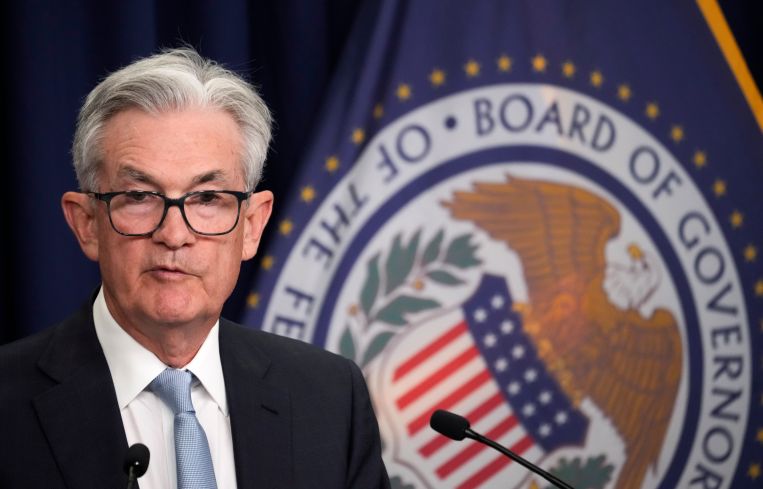Fed Presses Pause on Interest Rates Once Again to Close Out 2023
Central Bank is forecasting three rate cuts in 2024.
By Andrew Coen December 13, 2023 2:06 pm
reprints
The Federal Reserve held short-term interest rates steady to close its 2023 calendar in a move that positions commercial real estate for a potential rebound in transaction volume next year, according to analysts.
The central bank kept its benchmark interest rate unchanged at between 5.25 percent and 5.5 percent for a third straight meeting after bringing rates to their highest level in 22 years in July. The Fed previously increased rates in 11 of 12 meetings dating back to March 2022 when borrowing conditions were at near-zero levels in an effort to fight inflationary pressures.
The Fed in its post-meeting statement indicated three interest rate cuts were on tap for 2024. It also said that inflation has “eased over the past year but remains elevated.”
“Given how far we have come along with the uncertainties and risks that we face, the committee is proceeding carefully,”Fed Chairman Jerome Powell said in a post-meeting press conference. “We will make decisions about the extent of any additional policy firming and how long policy will remain restrictive based on the totality of the incoming data, the evolving outlook and the balance of risks.”
Powell said a majority of Fed committee members view a “reasonable” federal funds rate level of 4.6 percent at the end of 2024, 3.6 percent in late 2025 and 2.9 percent in year-end 2026 based on current economic conditions. He noted that while Fed members don’t view interest rate hikes in the near future as likely, they also don’t want to “take the possibility off the table.”
Thomas LaSalvia, head of CRE economics at Moody’s Analytics, said that while transaction activity will likely remain slow in the start of 2024, deal output may start to take shape in the second half of the year if interest rates begin to trend down. Moody’s is forecasting two to three rate cuts in 2024 starting late in the second quarter.
“It’s still going to be a little bit of a tentative transaction market out there within CRE,” LaSalvia said. “While we don’t want to see a lot of distressed sales, if there happen to be a few that will set a floor for where pricing is.”
LaSalvia projects a “slow but steady” decline in interest rates to a new reality where the Fed funds rate sits between 2 to 3 percent and the 10-year Treasury is closer to 4 to 4.5 percent. He noted there remains enough uncertainty among CRE market participants resulting in the bid-ask spread between buyers and sellers being around 10 percent, but stressed that this could change once more economic clarity emerges from the Fed.
A recent drop in the 10-year Treasury from levels approaching 5 percent in October to around 4.2 percent as of Monday bodes well for the CRE capital markets opening up again in the near future, according to Sam Chandan, director of New York University’s Chen Institute for Global Real Estate Finance. Chandan noted that a downward trajectory in the long-term debt will help propel more refinancing deals that are crucial for distressed properties that are facing looming loan maturities.
“I think [the pause] reflects that the market sees those inflationary pressures moderating and it does believe that the Fed has reached the peak of the rate-tightening cycle, “ said Chandan of the decline in the 10-year Treasury of late. “If we continue along the baseline path, that will take some of the pressure off of the 10-year and afford us a little bit more flexibility in the refinancing market in 2024.
Chandan noted that prior to Wednesday’s meeting the market was pricing in roughly four interest rate cuts for next year that would bring the federal funds rate down to between 400 to 450 basis points by the end of 2024. He stressed that this did not line up with recent Fed projections of the target rate going to 5.1 percent by the end of 2024, which would equate to around one cut.
While a decrease in interest rates would be welcome news for many CRE property owners in need of debt financing, the higher borrowing conditions have provided some positives for well-capitalized sponsors by driving away competition, according to Brad Case, chief economist for Middleburg Communities.
“We have to work harder to get that equity and debt capital for what we are doing, but we have the experience and we have the track record so it doesn’t stop us,” Case said. “It stops the people who were in it only because money was free.”
Andrew Coen can be reached at acoen@commercialobserver.com


